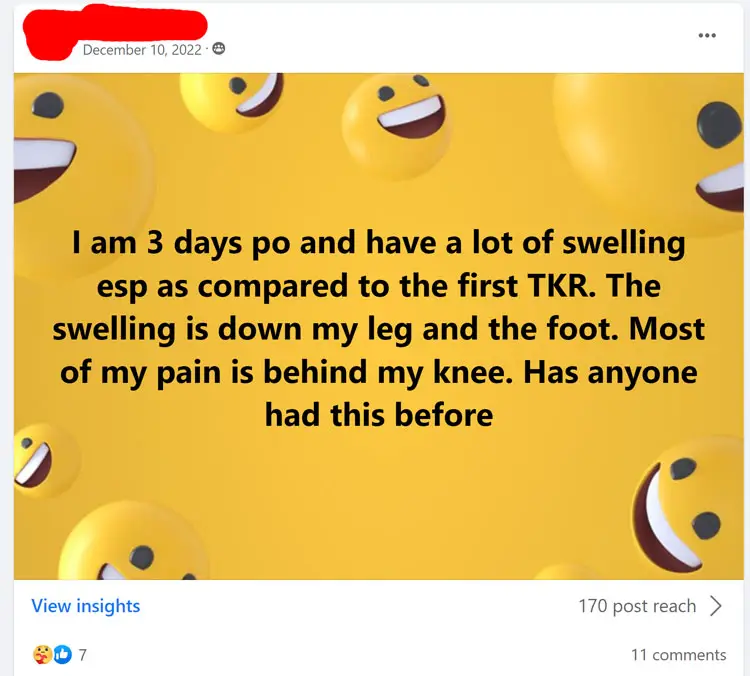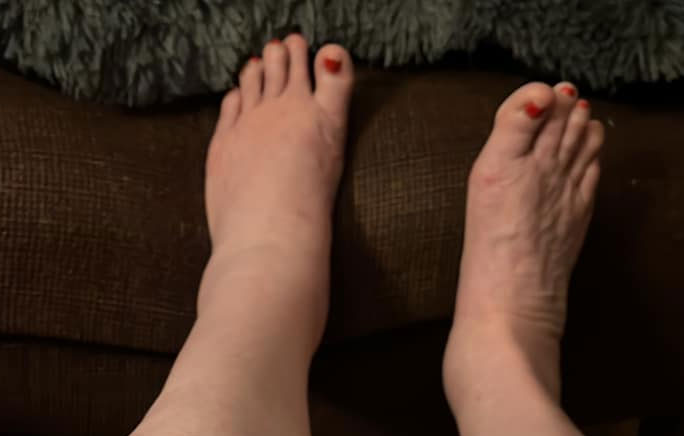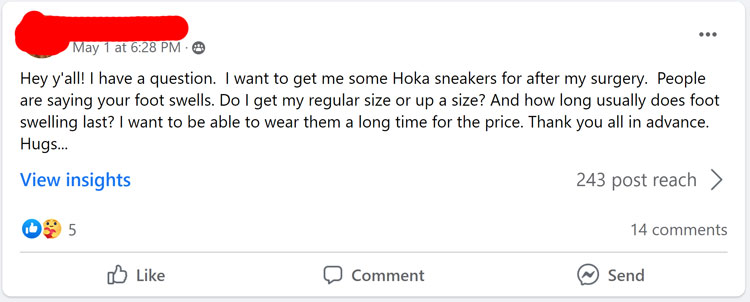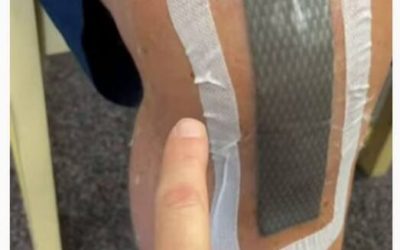Is foot swelling after knee surgery normal?
Foot swelling after total knee replacement surgery is a common concern among patients. This comprehensive guide will explore the causes of swelling, how to manage and reduce it, and steps to prevent it from occurring. Read on to learn more about foot swelling after total knee replacement and what you can do to ensure a smooth recovery.

Understanding Total Knee Replacement
Total knee replacement, also known as knee arthroplasty, is a surgical procedure that involves removing the damaged parts of the knee joint and replacing them with artificial components. This surgery aims to relieve pain, improve function, and restore mobility for individuals suffering from severe knee arthritis or other knee-related conditions. The recovery process varies depending on factors like the patient’s age, overall health, and the extent of the surgery.
Causes of Foot Swelling After Total Knee Replacement
Foot swelling can occur after total knee replacement for various reasons. Understanding these causes is essential to address the issue effectively:

1. Inactivity
During the initial days of recovery, your activity level will be limited to promote healing and prevent complications. This reduced activity may lead to fluid buildup and swelling in the lower extremities. Prolonged inactivity can increase the risk of blood clots and other complications, making it crucial to follow your doctor’s recommendations for gradual increases in activity levels.
2. Surgical trauma
Total knee replacement is a major surgery that causes trauma to the tissues around your knee joint. This trauma can lead to inflammation and fluid retention, resulting in swelling. Your body’s natural response to surgical trauma is to initiate the healing process, which includes increased blood flow to the affected area, causing inflammation and swelling.
3. Blood clot formation
In rare cases, foot swelling after total knee replacement surgery may be due to blood clots. Deep vein thrombosis (DVT) is a serious medical condition that occurs when a blood clot forms in a deep vein, usually in the legs. DVT can cause swelling, pain, and redness in the affected area and requires immediate medical attention.
4. Lymphedema
Lymphedema refers to the buildup of lymphatic fluid in the tissues, which can lead to swelling. After total knee replacement surgery, some patients may experience temporary lymphedema due to impaired lymphatic flow in the affected leg.
5. Infection
Although rare, post-surgical infections can also cause foot swelling after total knee replacement. Infections can lead to increased inflammation and fluid buildup in the affected area, which can contribute to swelling. If you suspect an infection, contact your healthcare provider immediately.

Managing Foot Swelling After Knee Surgery
To reduce foot swelling after total knee replacement, follow these simple steps:
Elevate
Your leg Elevation is one of the most effective ways to manage swelling after knee surgery. By keeping your leg elevated above the level of your heart, you can help reduce swelling and promote the return of blood and fluid to the upper body. Use pillows or cushions to prop your leg up while resting, and try to elevate your leg as much as possible during the first few days after surgery.
Apply cold therapy
Cold therapy is an effective way to reduce inflammation and alleviate swelling. Applying ice packs or cold therapy devices to the affected area can help constrict blood vessels, limit inflammation, and numb the surrounding nerves, providing pain relief. Make sure to follow your doctor’s instructions on proper usage, and remember to wrap the ice pack in a cloth or towel to protect your skin from frostbite.
Compression
Wearing compression stockings or elastic bandages can help reduce swelling by improving blood circulation in the affected area. These garments provide gentle pressure that encourages the flow of blood and lymphatic fluid back toward the heart, reducing fluid buildup and swelling in the legs. Follow your doctor’s recommendations on the appropriate compression level and duration of use.
Gentle exercises
As recommended by your healthcare provider, start doing gentle exercises and gradually increase activity levels to prevent foot swelling and promote healing. Ankle pumps, heel slides, and leg raises are examples of low-impact exercises that can help improve circulation, reduce swelling, and enhance your overall recovery. Make sure to consult your healthcare provider or physical therapist before starting any exercise routine.
Medications Your doctor may prescribe medications to help manage foot swelling after total knee replacement surgery. These medications may include anti-inflammatory drugs to reduce inflammation, pain relievers to alleviate discomfort, or anticoagulants to prevent blood clot formation. Always follow your doctor’s instructions regarding the use and dosage of prescribed medications.
Massage
Gentle massage can help stimulate blood flow, reduce fluid retention, and alleviate swelling in the affected area. Lymphatic drainage massage, performed by a certified therapist, can be particularly beneficial for addressing post-surgical swelling. Consult your healthcare provider before undergoing massage therapy to ensure it is safe and appropriate for your specific situation.
Preventing Foot Swelling After Total Knee Replacement
Preventive measures can help minimize foot swelling after knee surgery. Consider the following tips:
Maintain a healthy weight
Maintaining a healthy weight can reduce the pressure on your knee joint and lower the risk of swelling. Excess body weight puts additional strain on the knee joint, which can exacerbate swelling and prolong the healing process. Adopting a balanced diet and engaging in regular physical activity can help you achieve and maintain a healthy weight.
Stay active
Regular exercise before surgery can help improve circulation and reduce the chances of swelling after the procedure. Engaging in low-impact activities such as walking, swimming, or cycling can enhance your overall fitness and prepare your body for surgery. Additionally, staying active during recovery can aid in reducing swelling and promoting healing.
Follow your doctor’s advice
Adhere to your doctor’s post-operative instructions, including taking prescribed medications, attending physical therapy sessions, and gradually increasing your activity levels. Following your healthcare provider’s guidance can help ensure a successful recovery and reduce the risk of complications, including foot swelling.
Stay hydrated
Proper hydration is essential for maintaining good health and can help prevent swelling after total knee replacement surgery. Drinking enough water helps flush out excess sodium and supports healthy blood circulation, both of which can reduce swelling. Aim to consume at least eight 8-ounce glasses of water daily, or follow your healthcare provider’s recommendations based on your specific needs.
Wear proper footwear
Wearing supportive and comfortable footwear can help alleviate foot swelling after knee surgery. Shoes that fit well and provide adequate cushioning and arch support can reduce pressure on your feet and promote proper circulation. Avoid wearing tight or ill-fitting shoes, as they can restrict blood flow and exacerbate swelling.

Conclusion
Foot swelling after total knee replacement is a common and manageable issue. By understanding the causes, taking steps to manage swelling, and implementing preventive measures, you can ensure a successful recovery. If you notice any unusual symptoms, such as persistent or severe swelling, contact your healthcare provider immediately. Remember, every patient’s recovery journey is unique, so it’s essential to communicate with your healthcare team and follow their guidance to achieve the best possible outcome.

Anthony Maritato, PT
Physical Therapist
Anthony Maritato, PT is an Ohio licensed physical therapist and private practice owner.
Mr. Maritato specializes in helping patients who have received a total knee replacement or rotator cuff repair surgery. Ohio license #PT011602
Related articles:
Best Ankle Pumps Exercise [Video] 3 Tips After Total Knee Replacement Surgery
What are ankle pumps? Ankle pumps are a simple and effective exercise for post-surgery recovery and sedentary lifestyles after knee replacement surgery. Ankle pumps, as the name suggests, are simple exercises involving the rhythmic flexing and extending of the ankle,...
Why Does A Knee Pop When Standing From A Chair: Total Knee Replacement Questions
Facebook Question About A Knee Pop Sensation "I am 2 yrs post op on my right knee and when I get up from a sitting position it makes a pop sound almost all of the time. Is that normal." My response: Watch the video below to localize where the knee popping is coming...
How to Shower After Knee Surgery 2022
When and How to Shower After Knee Surgery: Post Surgical Instructions Timeline Consult your surgeon or surgical team before showering. They will provide recommendations specifically for your post-surgical situation. Dr. Paul G. Kiritsis, M.D. suggests his patients are...


![Best Ankle Pumps Exercise [Video] 3 Tips After Total Knee Replacement Surgery](https://totaltherapysolutions.com/wp-content/uploads/2022/08/ankle-pumps-after-total-knee-replacement-surgery-2.jpg)

